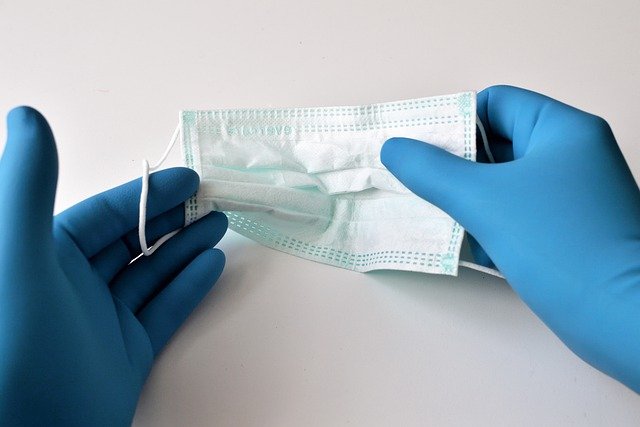Flu Vaccines: What Does the Future Hold?
Omicron spinoffs, respiratory syncytial virus (RSV), and influenza (flu) viruses have formed a sort of unholy trinity of respiratory infections. Covid vaccines were initially highly effective against infection, hospitalization, and death, but with the multiplication of new variants, only strong protection against hospitalization and death remains. In a previous Perspective (https://gvn.org/respiratory-syncytial-virus-newly-resurgent/), we noted that the original difficulties with RSV vaccines appear about to be overcome. What about flu virus? Currently, flu virus vaccines consist of inactivated whole virus, or viral proteins produced with recombinant nucleic acid technology. The manufacturing process requires considerable time and effort, and it is thus necessary to forecast the varieties of flu that will be prevalent during flu season prior to production. Predictions are not always accurate, and efficacy is variable. Clearly, better approaches are needed. What are the prospects?

The target of neutralizing antibodies elicited by existent flu vaccines is the trimeric surface hemagglutinin (HA) protein. The HA protein consists of a membrane-bound stalk, which is relatively antigenically stable, linked to a globular head, which is much more variable. The antibodies tend to target the head, preventing cell entry, but their activity is restricted to viral strains that are closely related to the vaccine strains. Thus, the search has been on for ways to generate broader antibody specificities.
One approach has been to target the stalk of the HA protein, as it is more conserved than the head. Antibodies to the stalk do occur in humans following infection and monoclonals have been derived that cross-react between viral groups. The abundance of stalk antibodies is low compared to head antibodies, but they correlate independently of head antibodies with protection from infection and disease in real world transmission. Their activities differ somewhat from head antibodies, in that they are dependent upon interactions through Fcγ receptors, indicating that they kill infected cells through antibody-dependent cellular cytotoxicity (ADCC) or cellular phagocytosis (ADCP). Approaches to increasing responses to the stalk have therefore become one main approach to a more universal flu vaccine. A recent study using non-replicative adenoviral delivery of a secreted form of the H1 HA protein resulted in the generation of stalk antibodies and provided complete protection against lethal challenge with heterologous viruses

Another novel approach to targeting the HA stalk has involved chimeric vaccines, in which the hemagglutinin contains the head domain of one flu virus and the stalk of a different one. These approaches are predicated on infection or vaccination priming a stalk antibody response, which is then boosted by vaccination with a chimeric vaccine in which the stalk is homologous but the head is heterologous. One such study in humans showed that vaccination with a live attenuated virus containing a chimeric HA protein with a heterologous head but a homologous stalk and then boosted with a second live attenuated virus containing a chimeric HA generated serum IgG antibodies against the conserved stalk domain, suggesting such an approach might be broadly protective in humans. A similar Phase 1 study in humans used a live attenuated virus containing a chimeric HA with an H1 stalk but the head of an avian flu virus, which presumably would not have been previously encountered by humans. Prime and boost with the same chimera elicited a high titer and durable antibody response with strong ADCC and ADCP activities. Taken together, both reports provide strong proof of principle for this chimeric approach.
In another approach to target the HA stem region, which used a stable trimer of a portion of the stalk region to immunize mice, immunized mice were protected from lethal viral challenge. The induced antibody responses included both neutralization and ADCC activity. Likewise, vaccination of cynomolgus monkeys subsequently challenged with a sublethal viral dose had significantly reduced fever.
An alternate approach used a polyvalent mRNA/lipid nanoparticle that included HA mRNAs for all 20 known lineages of the influenza virus. Vaccination of mice or ferrets generated both cross reactive and type-specific antibodies against all 20 subtypes and protected both vaccinated species against challenge with various viral strains. A second mRNA-based approach combined influenza group 2 HA stem, neuraminidase, nucleoprotein, and matrix protein 2 mRNAs, all of which tend to be relatively well conserved, to vaccinate mice. This four-antigens formulation elicited both cellular and humoral immunity and protected mice from challenge by various viruses, even including a group 1 influenza virus.
One reason these approaches are important is that they have the potential to provide protection against future novel influenza strains that might not otherwise be affected by current vaccines. Another reason is that they offer a much quicker approach to vaccine formulation than do traditional methods. In any event, it clearly is quite important to develop more broadly protective vaccines against varieties of flu viruses that are likely to circulate but which are hard to forecast. The above studies give hope that this goal will be achievable in the near future.
References:
1. Krammer, F., The human antibody response to influenza A virus infection and vaccination. Nat Rev Immunol, 2019. 19(6): p. 383-397.
2. Guthmiller, J.J., et al., Broadly neutralizing antibodies target a haemagglutinin anchor epitope. Nature, 2022. 602(7896): p. 314-320.
3. Wu, N.C. and I.A. Wilson, Structural insights into the design of novel anti-influenza therapies. Nat Struct Mol Biol, 2018. 25(2): p. 115-121.
4. Ng, S., et al., Novel correlates of protection against pandemic H1N1 influenza A virus infection. Nat Med, 2019. 25(6): p. 962-967.
5. DiLillo, D.J., et al., Broadly neutralizing hemagglutinin stalk-specific antibodies require FcgammaR interactions for protection against influenza virus in vivo. Nat Med, 2014. 20(2): p. 143-51.
6. Bliss, C.M., et al., A single-shot adenoviral vaccine provides hemagglutinin stalk-mediated protection against heterosubtypic influenza challenge in mice. Mol Ther, 2022. 30(5): p. 2024-2047.
7. Bernstein, D.I., et al., Immunogenicity of chimeric haemagglutinin-based, universal influenza virus vaccine candidates: interim results of a randomised, placebo-controlled, phase 1 clinical trial. Lancet Infect Dis, 2020. 20(1): p. 80-91.
8. Nachbagauer, R., et al., A chimeric hemagglutinin-based universal influenza virus vaccine approach induces broad and long-lasting immunity in a randomized, placebo-controlled phase I trial. Nat Med, 2021. 27(1): p. 106-114.
9. Impagliazzo, A., et al., A stable trimeric influenza hemagglutinin stem as a broadly protective immunogen. Science, 2015. 349(6254): p. 1301-6.
10. Arevalo, C.P., et al., A multivalent nucleoside-modified mRNA vaccine against all known influenza virus subtypes. Science, 2022. 378(6622): p. 899-904.
11. McMahon, M., et al., Assessment of a quadrivalent nucleoside-modified mRNA vaccine that protects against group 2 influenza viruses. Proc Natl Acad Sci U S A, 2022. 119(45): p. e2206333119.
